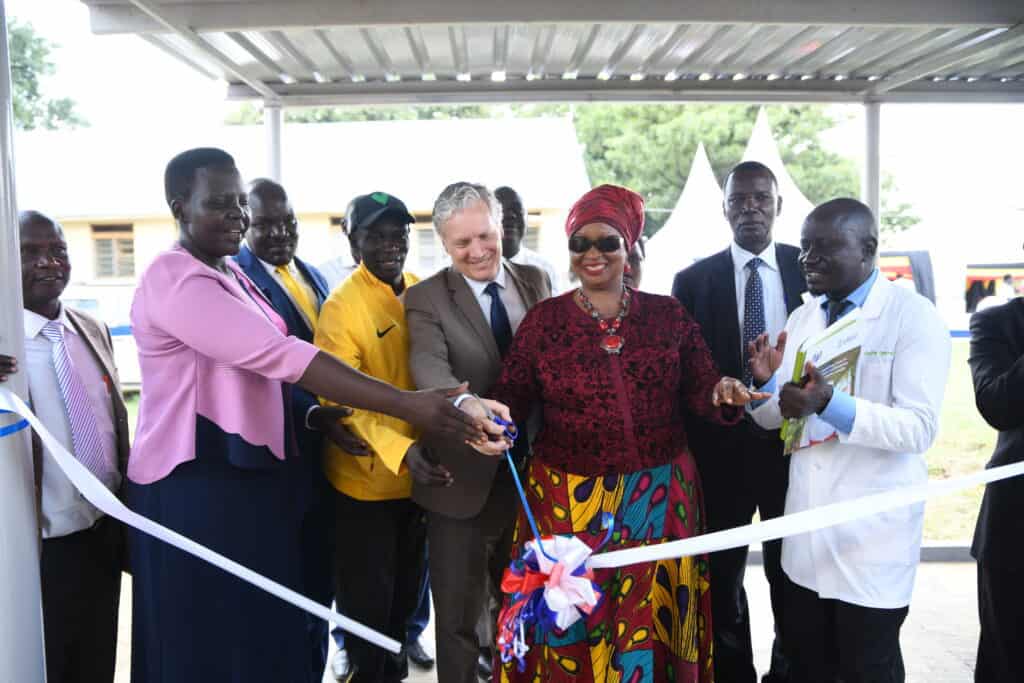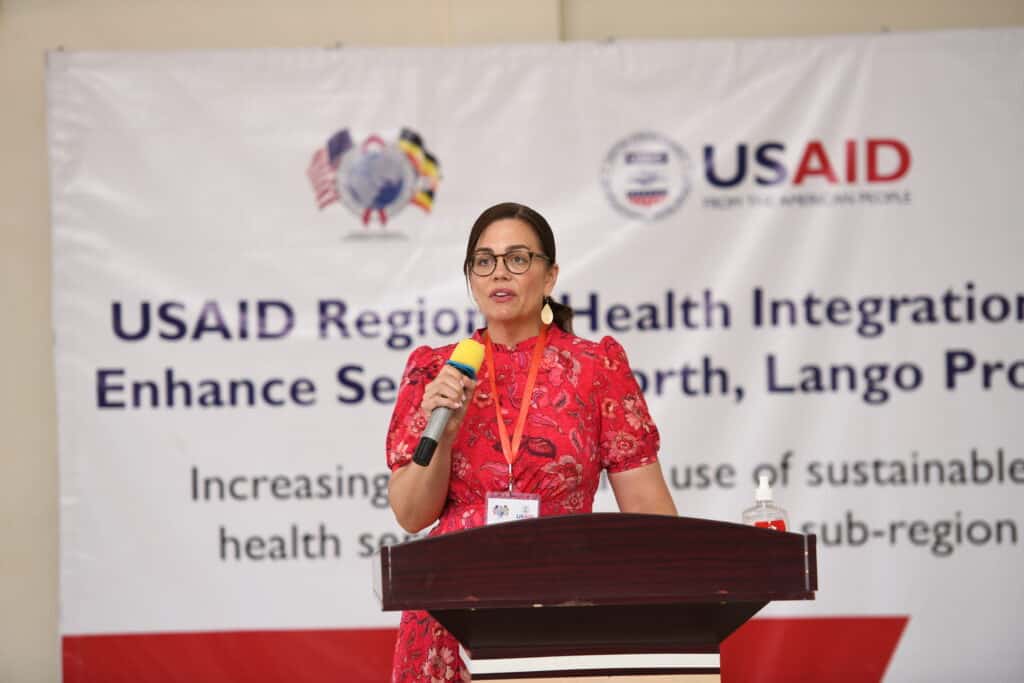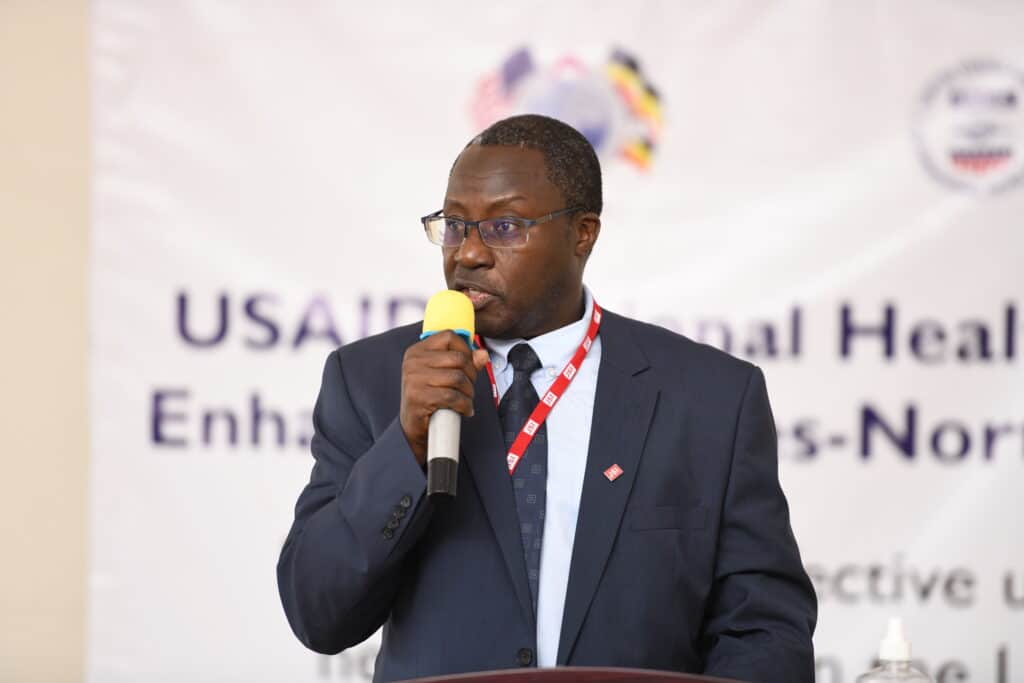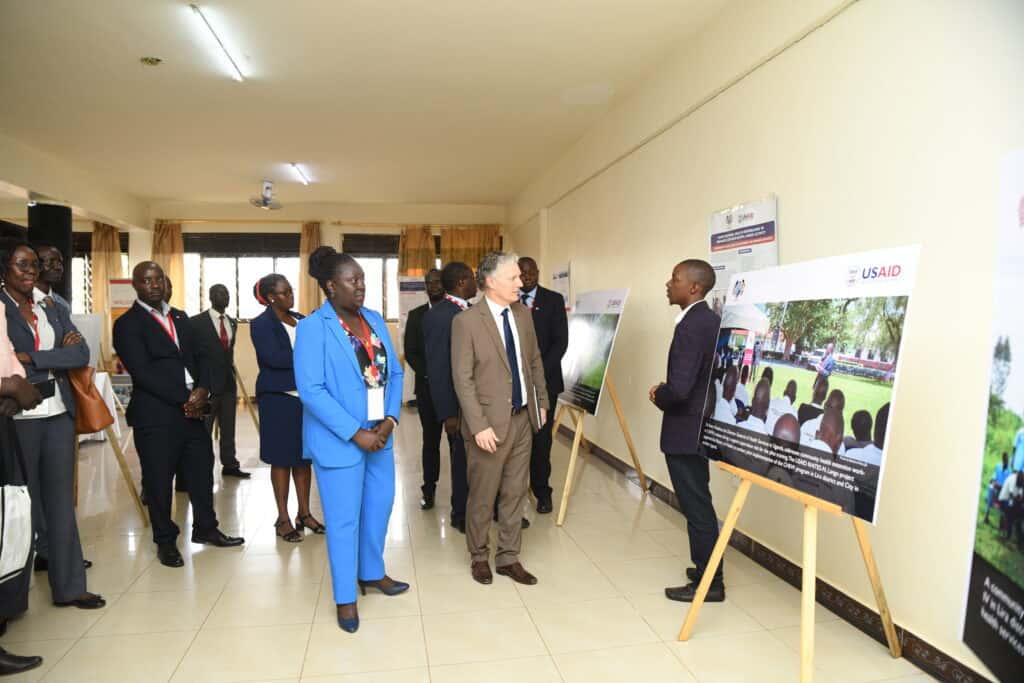This website uses cookies so that we can provide you with the best user experience possible. Cookie information is stored in your browser and performs functions such as recognizing you when you return to our website and helping our team to understand which sections of the website you find most interesting and useful.
A nurse attends to a mother and child in the newly renovated maternity ward at Orum Health Center IV in northern Uganda. Photo: Malaika Media
On May 10th, the United States Agency for International Development (USAID) Uganda, Ministry of Health, and JSI commemorated the conclusion of the Regional Health Integration to Enhance Services- North, Lango (RHITES-North, Lango) project in Uganda. RHITES-North, Lango strengthened the region’s health system and increased the use of sustainable health services to deliver person-centered care to communities, including vulnerable populations.
The six-year $69.7M project, in partnership with the Ministry of Health, increased access to health services for more than 2 million people in the 475 parishes of Lango sub-region, resulting in an uptake of family planning services by over 182,000 women and girls, and over 18,000 women giving birth at health facilities. The project contributed to saving the lives of over 1.4 million women and children.
“Using a local capacity strengthening approach, the USAID RHITES-N, Lango project collaborated with the districts to design and support community-led, data-driven solutions, and reinforce established health systems, which improved the quality of integrated health services in the region, ” said Med Makumbuki, the project’s chief of party.
The day’s events included a celebratory joint handover of a renovated maternity ward and operation theater at Orum Health Center IV. The project also refurbished operation theaters in Ogur Health Center IV and Dokolo Health Center IV—ultimately supporting over 80,000 mothers.
USAID Mission Director Richard Nelson said, “In 2019, only 41 percent of children under five with pneumonia were appropriately treated, according to the Ministry of Health’s recommended standards. That figure is now 95 percent. We’ve also seen similar improvements in the treatment of childhood diarrhea, with 94 percent now being appropriately treated.”
Uganda’s Minister of State for Health in charge of General Duties, Honorable Anifa Bangirana Kawooya, expressed gratitude to the project team, USAID, and all partners for the long-standing partnership.
The RHITES-N, Lango project also contributed to improvements in HIV, tuberculosis (TB), malaria, nutrition, and water and sanitation indicators across the Lango sub-region. As part of USAID’s localization initiative, the project collaborated with districts to design and support community-led data-driven solutions, and reinforced established health systems to improve the quality of integrated health services in the region.
JSI, in partnership with AMREF Health Africa, Another Option, Doctors with Africa, and The Medical Concierge Group, implemented the RHITES-N, Lango project, funded by USAID and the President’s Emergency Plan for AIDS Relief (PEPFAR). The project demonstrated significant improvements in HIV, TB, malaria, family planning, maternal, newborn, child health, nutrition, and water and sanitation indicators across the Lango sub-region. The project also supported the Government of Uganda’s COVID-19 response over its last two years, strengthening the health system’s capacity to respond to future infectious disease outbreaks.





